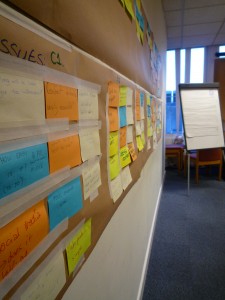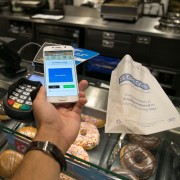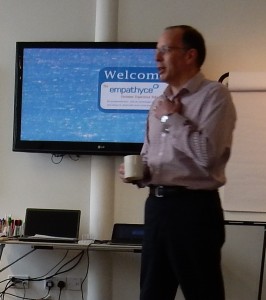Do the good customer experiences obscure the bad ones for management?
As consumers we know that a company is only as good as the last experience we had with them. But it does seem that some companies assume if they are able to give a good experience once, they are doing it every time, everywhere. It’s obviously a very dangerous assumption.

It’s not easy when things are inconsistent
I’m often asked who we should look to for customer experience inspiration. Who gets it right and what do they do?
We all have our favourite brands and stories to go with them. There is no shortage of companies to learn from. They have the right mindset and are doing great things. But, organisations not only need to be proficient at walking before they can run, they can’t afford to forget how to walk once they can run.
And so before trying to emulate the great and the good, a question that many businesses should ask is “What do we do today that we should stop doing?”. What is causing customers and employees, including (especially) the ones who don’t complain, frustration, angst or simply to not engage?
Business leaders may say they are profitable, they have many satisfied customers and their people are proud. Yet the laws of unintended consequences, of cross-functional operations working to different agendas and of short-term profit-taking throw a protective veil over complacency and corrosive experiences.
The issues are laid bare these days for all to see, especially on social media and review sites.
Take, for example, Trustpilot. I’m increasingly seeing businesses using the rating as a customer metric in addition to Net Promoter Score, customer satisfaction, effort scores and so on. It’s freely available and constantly updated. Companies can track their score, benchmark against competitors and compare parallel sectors. Crucially though, the unsolicited comments contain a rich seam of qualitative insight that tells us exactly why things go well or not. Why would you not want to tap into that? Or, at least learn what makes competitors’ customers unhappy to make sure it’s not happening closer to home?
To illustrate the point, I’ve picked out a few examples and I’ll start with, for me, two surprises…
John Lewis is one of the UK’s favourite places to shop. It keeps winning awards for its in-store service. The employees have a real stake in making sure customers are happy and it shows. However, go online and the story is very different.
Where their stores and people will be rated 9s and 10s out of 10, the website scores just 1.4. That’s as rated by more than 2300 recent reviews. There’s a lot of good stuff that happens at John Lewis but right now, online they are keeping company with SouthernRail (0.9/10) and lag behind even Ryanair (2.2/10).
Broken promises, conflicting information, inflexibility and being difficult to communicate with are just some of the reasons cited. Whether that’s a consequence of outsourcing or handing over the post-sale experience to suppliers, only John Lewis themselves fully understand. However, there are many comments that illustrate the commercial consequences, as one unhappy customer said: “Have spent thousands at John Lewis over the years but after this will go elsewhere”.
Employees answer the negative comments with a resigned “Sorry, we really didn’t mean this to happen” tone. And one customer summed the gap between expectations and reality by saying “Because it’s John Lewis, it feels worse”.
Another brand struggling to keep up with the expectations it has spent much time, money and effort creating is firstdirect. For many years they were always at the top of the list of exemplars. Personalised and friendly service, easy to get hold of and no need to repeat issues were just some of its credentials that set it apart from other banks.
At a time when the one thing retail banks need is differentiation, they seemed to have it in spades. Now though, firstdirect scores just 1.9 out of 10 with many unhappy customers venting their frustrations about things being slow, disinterested employees and not keeping promises to call back or follow-up.
Meanwhile, the airline that claimed to be “the world’s favourite” is also no stranger to having a mixed bag of reviews. On Trustpilot at the moment British Airways’ score is just 2 out of 10. Reviewers talk of getting “better treatment with Ryanair”, of misinformation and of empty apologies. At the same time though, happy customers rave about the friendliness of staff, easy booking processes and clean aircraft. On the aviation-specific review site Skytrax, BA sees a similar spectrum of views from “Cannot fault the airline” to “Terrible service”.
Finally, but no surprise this time, is BT. Every time I run a customer experience workshop I ask people to share a couple of stories of good and bad experiences they’ve had. There are brands who feature regularly in both camps but BT is by far the most frequently cited company for bad experiences.
On Trustpilot, they score just 0.3 out of 10 from the last 1700 reviews. Worryingly, if you were leading BT, many comments talk about the highly negative emotional impact – “I’m being driven to despair, I’m distraught and powerless” is just one recent example but reflected by many others too. The recurring themes here are an inability to find someone to take ownership of a problem, staff attitude and promises that aren’t kept, again and again.
That really isn’t what you want people to be sharing about your brand. It’s proof the brand is purely what people tell each other it is, regardless of what the strapline says it should be. And so BT’s internal rhetoric, it would appear, has some way to go. They talk openly about their approach being to “put customers first”, about wanting to create “the most customer-focused company in the world” and having an ambition by 2020 to “deliver great customer experiences”. Easy to say, much much harder to do.
And in a way, that’s the point. Whether you have made a public declaration to be the best customer experience company or you are simply about making profit, it doesn’t matter to us as customers – the very least we expect from any business is that we can trust them to do what they promise, they’ll make it easy and we won’t have any reservations about doing it again. Surely, the basics are not too much to ask?
As with most review sites views tend to be polarised. So at the other end of the spectrum, regularly attracting fans and scores of 9s and 10s are the likes of Moo.com, Mr Memory, Outdoorkit and Dial-a-Flight. These are not corporate giants but by and large they consistently get the basics right , the things those at the bottom of the pile can’t seem to manage. Common themes cited by customers are that they all have friendly and knowledgable employees, they do what they say they will and they keep customers informed. They make it feel like they’re on the customer’s side, they are perceived as good value and are easy to do business with. It’s no more complicated than that but the consequences for the bottom line are summed up neatly by one Outdoorkit customer who says “I seem to shop here more and more lately”.

Are you creating despair or fans? Or both?
I’ve looked at the ends of the scale to make the point. But is there anything to learn from those in the middle? I’d say lots. In terms of rising expectations, today’s scores of 8 will be tomorrow’s 7 and next week’s 6 so beware of complacency. Average mid-range scores also show these companies can and do get it right sometimes – they’ve done the hard bit but just lack the consistency. They have the ability, they just need to make the good things happen regularly rather than sporadically.
Having the aspiration to give great experiences is one thing but the people who lead and manage in organisations must also be sure they have a total self-awareness about what it’s really like to do business for anyone at anytime and anyhow. By all means protect and improve the good experiences but their presence doesn’t automatically mean an absence of more damaging experiences.
I hope the blog gives you some food for thought about your own customer experiences but do get in touch if you have any questions or comments. Use this site or send an email to me at [email protected] or call me on +44 (0) 7917 718072. Thank you for taking the time to read the post. Jerry




















 offer their insights on addressing others’ issues and get feedback on their own.
offer their insights on addressing others’ issues and get feedback on their own.